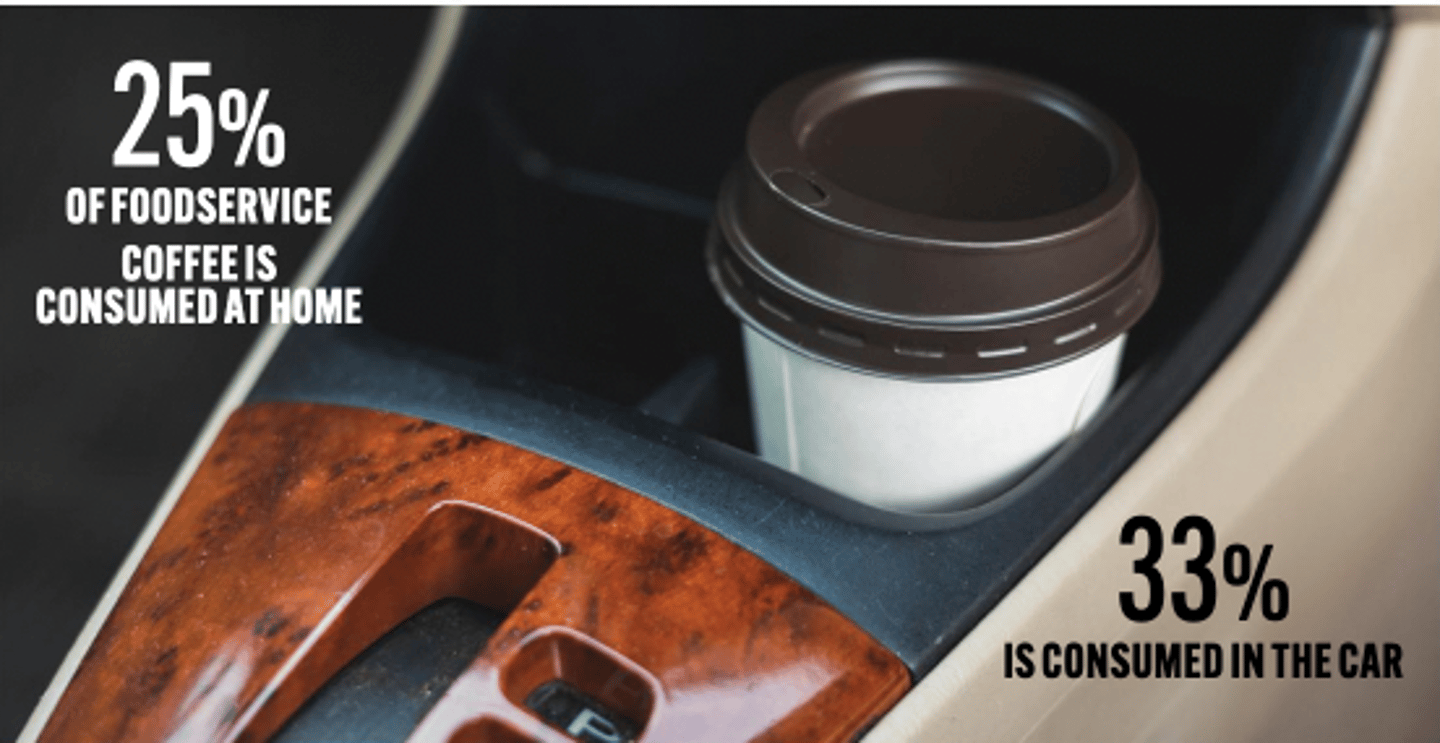Perk up!
Data of any kind reflects reality as seen through a rear-view mirror. Numbers are historical, a record of how you got to where you are. COVID health data was the exception. Its importance demanded more. Multiple provincial and international websites responded with near real-time data on daily/cumulative cases, test-positivity, vaccinations, and more.
Understanding the true impact of the pandemic on the food industry at large, however, has taken a while longer. Restaurants Canada (RC) only recently published the 2022 update of its Foodservice Facts report, which highlights shifts in consumer behaviour and details progress in the ongoing recovery.
- The bad: After significant contraction in 2020 and 2021, nominal foodservice sales are projected to return to pre-pandemic levels in 2022; however, adjusted for inflation, real sales in 2022 will be 11.0% below 2019 results.
- The less bad: Retail foodservice, which includes c-stores, department stores, and other retail establishments, recovered nominally by 2021, reflecting shifting consumer behaviour, combined with sector resilience.
- The new normal: Remote and hybrid work continue to have an impact on consumer behaviour. Reduced commuting has translated into fewer away-from-home (AFH) meal occasions, however “Canadians’ love of coffee has resulted in a slightly quicker recovery in morning traffic.”
If history repeats itself
Beyond the psychological shock of the World Trade Centre attacks on 9/11, the event sparked an unprecedented short-term curtailment of travel, which signalled the beginning of a significant global recession and a world forever changed.
One unexpected phenomenon was that, in Q4-01, the immediate aftermath, limited-serve restaurants (LSR) grew faster than full-serve restaurants (FSR). In fact, some of the big QSR chains reported improvement in their performance year over year. I recall that the head of a major foodservice supplier organization looked at this trend that I had flagged at the time and was nonplussed: “Makes sense. I’ve seen this before. Consumers will trade down, before they step away from foodservice entirely.”
RC suggests, in Foodservice Facts 2022, that a similar phenomenon may occur in 2023 as a response to the forces of inflation/recession. Rising menu prices, putting pressure on cash-starved consumers, will possibly impact spending through selective AFH meal skipping, downsizing of meals and consumers searching for a deal.
Never waste a crisis
Winston Churchill famously said, “Never let a good crisis go to waste.” The great foodservice recovery represents an unprecedented opportunity for c-stores to add customers and increase penetration of the AFH foodservice market. And coffee is the key.
Canadians love coffee. Hot coffee is by far the number one beverage purchased AFH. Add in chilled/frozen coffee and nearly two-thirds of consumers are in play. While the foodservice industry lost about 700 million servings of coffee during the first 12 months of the pandemic, reports The NPD Group, the category rebounded as consumers returned to worksites, schools, and other outside activities.
In the 12 months ending July 2022, more than 2 billion coffee servings were ordered AHF, up 13% from a year ago. However, even with the double-digit increase, restaurant coffee servings are down 15% from three years ago, before the pandemic. Hot specialty coffee, like lattes, had the most substantial growth, up 16%, traditional or regular coffee servings increased by 14%, and servings of iced, frozen, or slushy coffee rose by 7% from a year ago.
“As more consumers return to their pre-pandemic routines, foodservice coffee will somewhat recover from the steep declines experienced during the lockdowns,” says Vince Sgabellone, NPD foodservice industry analyst. “Restaurants do face competition from at-home coffee appliances and the coffee-making expertise consumers learned while in lockdown, but their competitive edge is offering the convenience of a great cup of coffee when we’re on the go.”
For a channel defined by the word convenience, here lies the opportunity. Capturing drive-through coffee consumption as workers resume their commute, and/or offering a convenient source of caffeine (in-store or delivery) for them when they’re working from home, could be a significant pick-me-up for your c-store business.
Global learnings
Research provider Intouch Insight recently published results of a study of convenience store consumers across the U.S., which concluded that c-stores are well positioned to compete with both limited-serve restaurants and coffee shops.
In 2022, 88% of coffee drinkers surveyed reported having purchased coffee from a convenience store and those who purchased, 96% said they would again.
Quality content
When it comes to coffee, Canadian consumers have high expectations and c-stores are taking note: Gone are the days of a pot turning to tar as it percolates all day. New equipment and quality beans are helping c-store and c-gas operators raise the bar and meet growing demand for a premium pick-me-up.
For instance, the latest automatic machines from the likes of Bunn, Franke and Keurig, feature easy-to-use touch technologies that do everything from grind beans fresh for every cup to creating an array of gourmet offerings, including espressos, lattes, cappuccinos and more.
Commercial machines can serve a cup of premium java in as little as 30 seconds: Baristas beware.
Price point
The tipping point increasingly will be price. McDonald’s’ and A&W’s assault on Timmies’ large morning day-part business was and continues to centre on stimulating trial through dramatic and repeated $1 coffee promotions. Quality and convenience being equal, decisions come down to price. C-stores offer a favourable value-equation compared to specialty coffee shops and most QSR chains.
In addition to saving money, consumers can save time, grabbing a hot beverage while filling up their vehicle.
The lipstick effect
Lipstick, like coffee, is a consumer staple. During the Great Depression, between 1929 to 1933, U.S. industrial output was cut in half. However, over the same period, cosmetics sales increased. The phenomenon is not just true of the U.S. The same effect has been seen consistently over the last century around the globe. During different periods of economic challenge, big-ticket discretionary purchases pull back. But spending on smaller indulgences tends to remain stable or even increase. True to the trend, with inflation reaching generational heights in the second quarter of 2022, “lipstick sales revenue (in the U.S.) increased by an impressive 28%.”
My advice would be to lean hard into the current economic headwinds. Respond to pervasive consumer uncertainty by executing on coffee in a way that only c-stores can—offering a place, price, and product that will draw consumer expenditures away from competitors and put wind in your sails.
Originally published in the January/February 2023 issue of Convenience Store News Canada.









